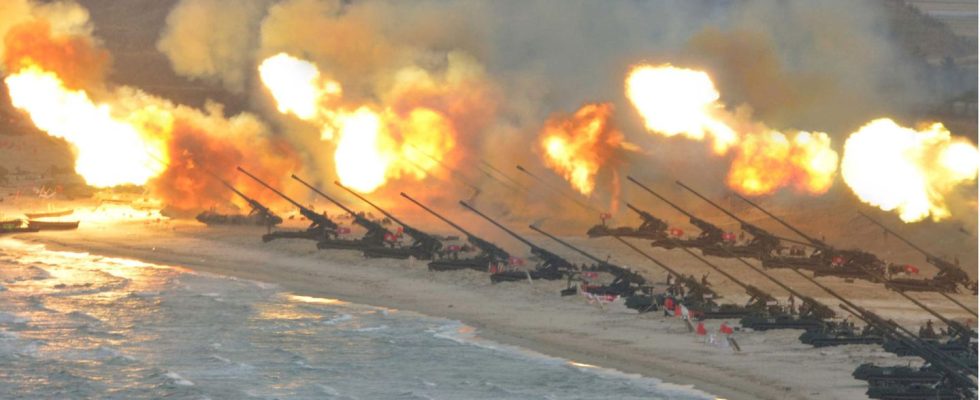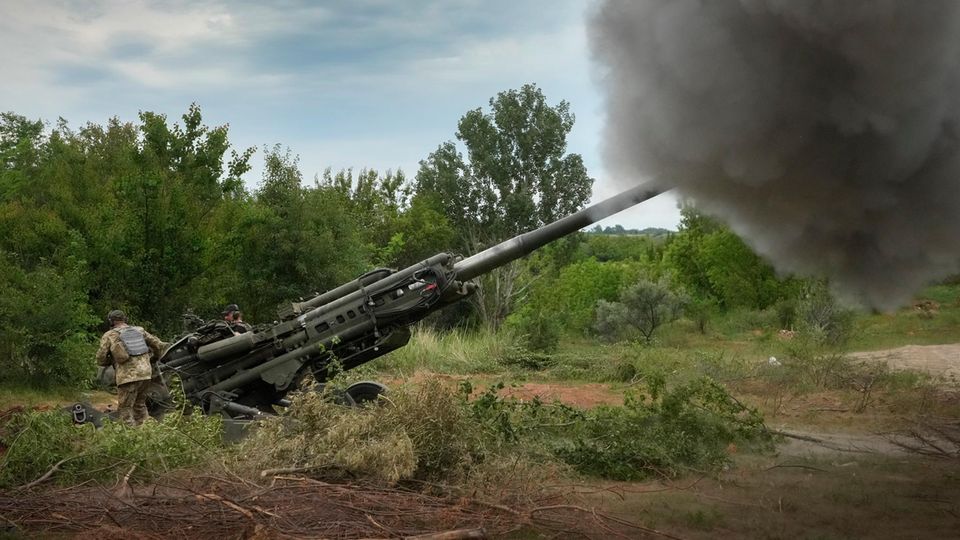War in Ukraine
North Korea – Kim Jong-un can supply these weapons to Putin
Exercise by North Korea’s armed forces.
© North Korean Armed Forces
North Korea is poor and backward – but sits on a mountain of weapons. The war in Ukraine is dominated by artillery and Kim Jong-un can supply huge amounts of ammunition.
Dictator friends Kim and Vladimir have met – and that doesn’t mean anything good for Kiev and the free world. Because jokes about the poor and backwards North Korea is cheap, but it obscures how much the country can improve Russia’s military capabilities.
North Korea has been supplying military equipment for years – mostly to pariah states such as Sudan or Iran. In the conflict in Ukraine, artillery is – somewhat surprisingly – once again the “god of war”. Artillery and long-range weapons of all kinds decide the battles, but use up huge amounts of ammunition. The Russian armed forces are currently firing fewer grenades than they did recently. But that doesn’t necessarily indicate a general shortage; the Russians are probably building up a stockpile for their own offensive operations. Basically, both sides are fighting this war from the magazine, which means that the new production does not compensate for the loss.
Tons of ammunition
North Korea has around 21,000 artillery pieces of all types in its arsenal, including around 8,500 of the heavy calibers. The country has stashed large quantities of ammunition for these weapons. Our own military doctrine calls for full equipment for 45 days of combat. The dimensions of warehousing cannot be compared with those in Western Europe. South Korean experts assume that there are “several tens of millions of shells.” If North Korea were to sell part of its hoard, the country would still be well equipped, and Putin would have around 10 million more grenades in his inventory.
To put it into perspective: Around 240,000 to 300,000 units are produced in the EU every year, even with an extreme (and unlikely) increase of 400 percent in the next few years, that would only be one million. The same applies to smaller calibers – such as the 120-millimeter mortar and infantry weapons.
Rockets for multiple rocket launchers
Almost more important than the ammunition for howitzers are the rockets for multiple rocket launchers (MLRS), the modern descendants of the Stalin organ. In addition to the heavy calibers from Uragan and Smerchs, the standard BM21 launcher plays a central role. Or rather played, because Russia still uses these rocket launchers, but no longer on the same scale as at the beginning of the invasion.
In addition, Kiev now has the upper hand here. Ukraine continuously receives large quantities of modern missiles of this caliber from several countries. Their range is 40 kilometers, while that of the older models is only around 20. Russia can only obtain long-range missiles from Iran and North Korea. Since the West is simultaneously supplying Kiev with long-range precision ammunition, Russia is falling behind when it comes to counter battery duels.
The North Korean stockpiles of artillery shells and MLRS ammunition are likely old and are not smart precision weapons. Nevertheless, a deal would help Putin in that it would relieve the Kremlin of worries about standard ammunition. For longer distances and precision strikes, the Russian military relies heavily on kamikaze drones such as the Lancet and the newly introduced cheap drone Scalpel. The Kremlin cites very high production figures for both systems. North Korea does not have to deliver from the magazine alone. In order to supply Russia permanently, the country could also ramp up production. Russia can eliminate current shortages of materials.
Tactical ballistic missiles
In addition to these weapons, North Korea also has modern tactical missiles. KN-23 and KN-24 roughly correspond to the Russian Iskanders or the American ATACMS. However, these weapons are important for the country’s own military and they are unlikely to be available in such quantities that larger numbers could be delivered.
North Korea is expected to receive energy, raw materials and food from Russia in return for support. On top of that, probably know-how in satellite and rocket technology and general help with arms production.
This deal is not a “game changer” that will turn the tide of the war as a single factor. However, if these deliveries are made, Moscow will counter the West’s strategy of strangling Russian arms production through sanctions – just as it had previously failed with semiconductors, for example.




